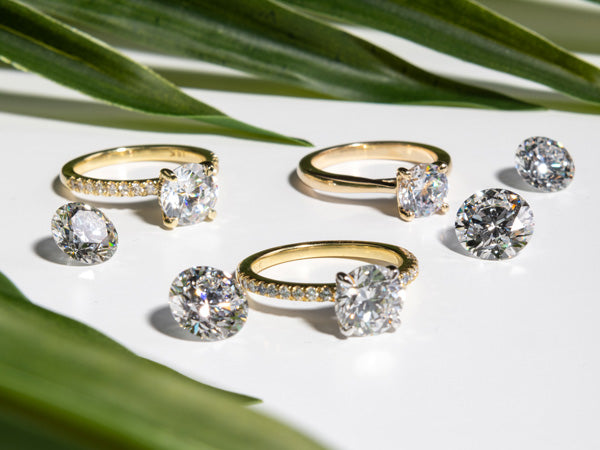Introduction
The world is witnessing a paradigm shift in how luxury and sustainability can coexist, especially in the diamond industry. Lab-grown diamonds have emerged as a revolutionary alternative to traditionally mined diamonds, offering a sustainable and ethical option for consumers. At the forefront of this movement is the World Wildlife Fund (WWF), which has been advocating for environmentally friendly practices across various industries. This article delves into the significance of lab-grown diamonds, their benefits, and how WWF’s involvement is shaping a more sustainable future.
The Rise of Lab-Grown Diamonds
What Are Lab-Grown Diamonds?
Lab-grown diamonds, also known as synthetic diamonds, are created in controlled environments using advanced technological processes that replicate the conditions under which natural diamonds form in the Earth’s mantle. These diamonds are composed of the same carbon atoms arranged in the same crystal structure as natural diamonds, making them virtually indistinguishable from their mined counterparts.
The Technology Behind Lab-Grown Diamonds
There are two primary methods for creating lab diamonds:
- High Pressure High Temperature (HPHT): This method mimics the natural process of diamond formation by applying high pressure and high temperature to a carbon source.
- Chemical Vapor Deposition (CVD): In this process, a diamond seed is placed in a chamber filled with carbon-rich gas. The gas is then ionized, causing carbon atoms to deposit onto the seed, gradually forming a diamond.
Both methods result in diamonds that are chemically, physically, and optically identical to mined diamonds.
The Benefits of Lab-Grown Diamonds
Environmental Impact
The mining of natural diamonds has long been associated with significant environmental degradation. It often involves the destruction of vast landscapes, deforestation, soil erosion, and the contamination of water sources with toxic chemicals. Lab-grown diamonds, on the other hand, have a substantially lower environmental footprint. They require less land disruption and generate fewer carbon emissions compared to traditional mining.
Ethical Considerations
One of the most compelling reasons to choose lab-grown diamonds is the ethical advantage they offer. The natural diamond industry has been plagued by issues such as child labor, forced labor, and the financing of armed conflict through “blood diamonds.” Lab-grown diamonds are produced in controlled, ethical environments, free from the human rights abuses often associated with diamond mining.
Economic Benefits
Lab-grown diamonds are generally more affordable than natural diamonds. The controlled production process allows for a consistent supply, reducing the costs associated with rarity and extraction. This makes high-quality diamonds accessible to a broader range of consumers without compromising on quality or beauty.
WWF’s Role in Promoting Sustainable Practices
WWF’s Mission and Vision
The World Wildlife Fund (WWF) is one of the world’s leading conservation organizations, dedicated to preserving the planet’s biodiversity and promoting sustainable practices across various industries. WWF’s mission is to build a future in which humans live in harmony with nature.
WWF and the Diamond Industry
WWF has been instrumental in advocating for sustainable practices within the diamond industry. By raising awareness about the environmental and ethical issues associated with traditional diamond mining, WWF encourages consumers to consider lab-grown diamonds as a responsible alternative. WWF’s initiatives include:
- Public Awareness Campaigns: Educating consumers about the environmental and social impacts of diamond mining and the benefits of lab-grown diamonds.
- Collaborations with Industry Leaders: Partnering with diamond producers and retailers to promote transparency, traceability, and sustainable practices in the diamond supply chain.
- Policy Advocacy: Working with governments and international organizations to develop and implement policies that support sustainable diamond production and trade.
Success Stories and Impact
WWF’s efforts have led to significant progress in the diamond industry. Increased consumer awareness has driven demand for lab-grown diamonds, encouraging more companies to adopt sustainable practices. This shift not only benefits the environment but also sets a precedent for other industries to follow.
The Future of Lab-Grown Diamonds
Innovations and Advancements
The technology behind lab-grown diamonds continues to evolve, with ongoing research and development leading to even more efficient and sustainable production methods. Advances in the CVD and HPHT processes are improving the quality and reducing the cost of lab-grown diamonds, making them an increasingly attractive option for consumers.
Market Growth and Consumer Trends
The market for lab-grown diamonds is experiencing rapid growth. As consumers become more conscious of their environmental and ethical impact, the demand for sustainable alternatives is rising. Jewelry brands and retailers are responding by offering a wider selection of lab-grown diamonds, catering to the growing interest in responsible luxury.
Challenges and Opportunities
Despite the many advantages of lab-grown diamonds, the industry faces challenges such as consumer perception and regulatory issues. Some consumers still view lab-grown diamonds as inferior to natural diamonds, and there is a need for clear and consistent labeling standards to ensure transparency. However, these challenges present opportunities for education and advocacy, paving the way for a more informed and conscious market.
Conclusion
The collaboration between WWF and the lab-grown diamond industry represents a significant step towards a more sustainable and ethical future. By choosing wwF and lab grown diamonds, consumers can enjoy the beauty and brilliance of diamonds while contributing to environmental conservation and social responsibility. As technology advances and awareness grows, the future of lab-grown diamonds looks promising, offering a shining example of how luxury and sustainability can go hand in hand.
